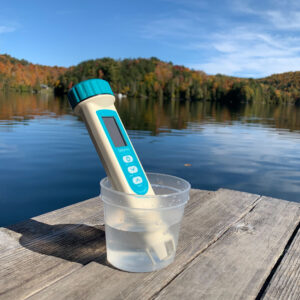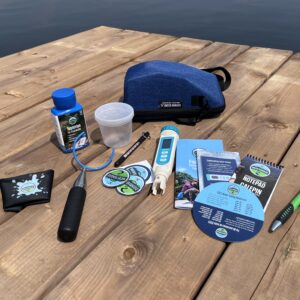Water temperature
What is water temperature?
Water temperature is simply how warm or cold the water is.

Why is water temperature important?
Water temperature impacts the results of many other water tests such as pH, conductivity, and dissolved oxygen. It changes the water’s density, the water’s ability to support life, absorb gases (like CO₂ and O₂), and absorb nutrients. Increases can cause some chemicals to become “soluble”: think how quickly salt dissolves in hot water versus cold water. Algae blooms and other vegetation can also grow more quickly in warmer water, causing problems for fish and wildlife.
What does a temperature measurement mean?
It depends! Unusually warm water could signal pollution discharge or climate change effects. To truly understand your results, you need to test consistently over time and look for trends. For example, if a river or stream used to be a cold-water habitat but is now warm, the cold-water fish and other aquatic life will be significantly affected. Consistent monitoring helps reveal these critical changes and their impacts.
Water Rangers testing protocol
Make sure the thermometer is submerged at least 10 cm under the surface of the water. Hold under the water for 5 minutes. You’ll know it’s ready when the temperature has remained the same for at least 30 seconds.
Our stream thermometers compare well to digital probes! Watch an experiment comparing the two.
Pro Tip: Can’t reach the water? No problem! Use your sample cup and reacher stick to scoop up a sample. Measure and record right away as exposure to the outside air changes the water temperature.
Start testing water temperature with these products:
-
 Stream thermometer (celcius)$12.00
Stream thermometer (celcius)$12.00 -
 Conductivity meter$55.00
Conductivity meter$55.00 -
 Compact Freshwater Testkit$119.00
Compact Freshwater Testkit$119.00
Contributing to the community!
Water Rangers is citizen-scientist led. So, if you have any questions, ideas, or notice any errors, please tell us!
